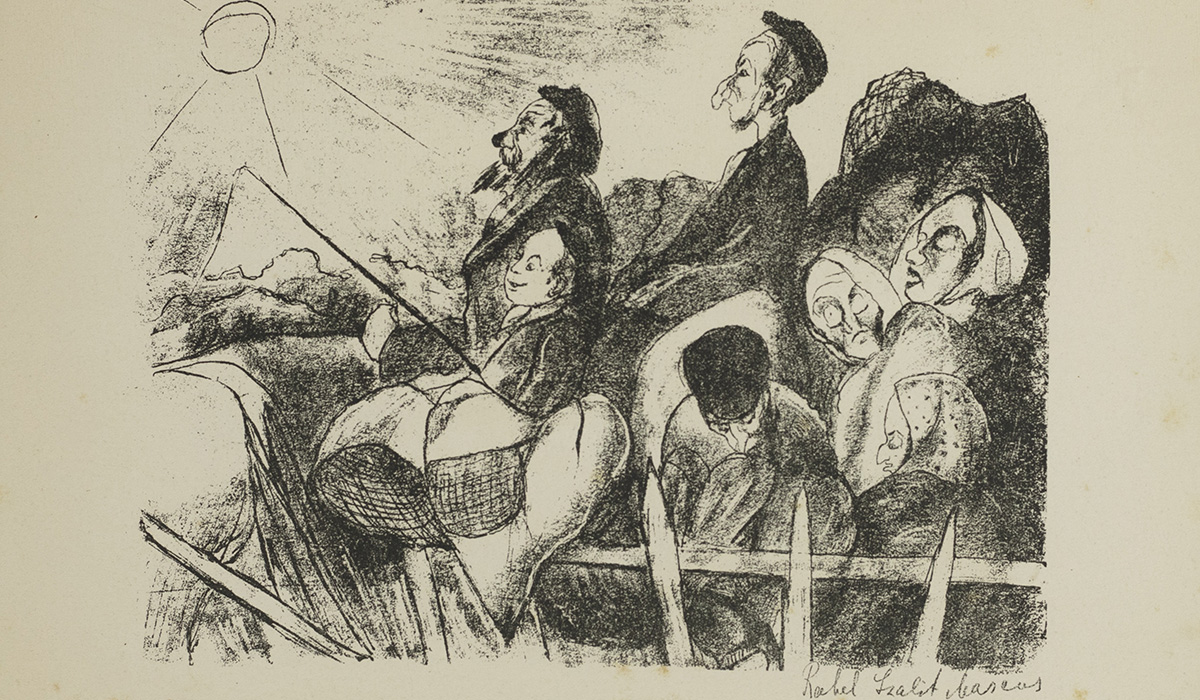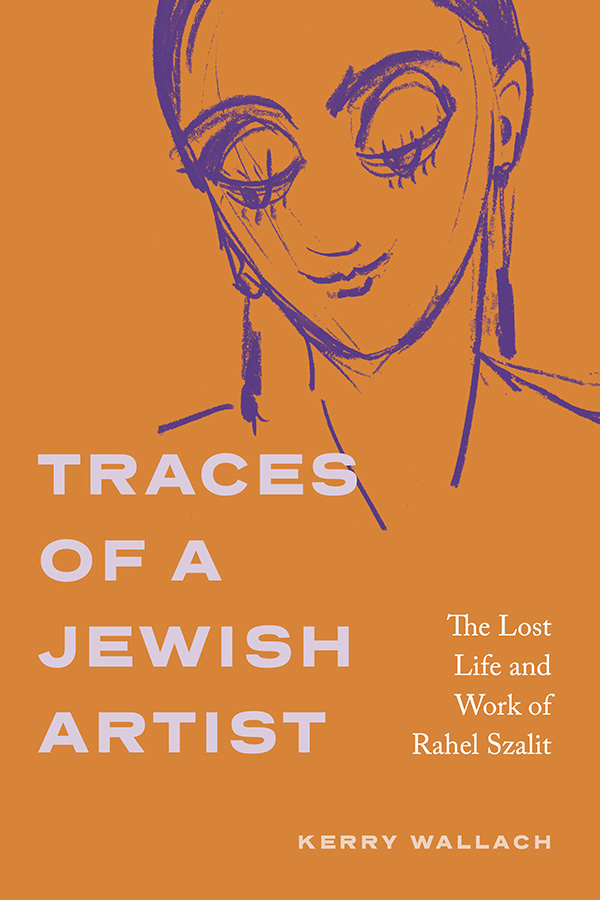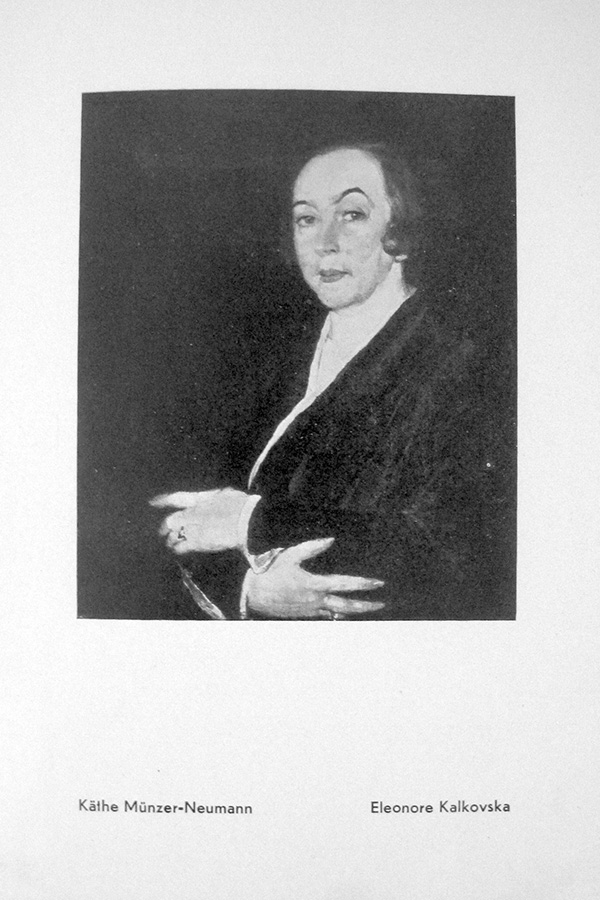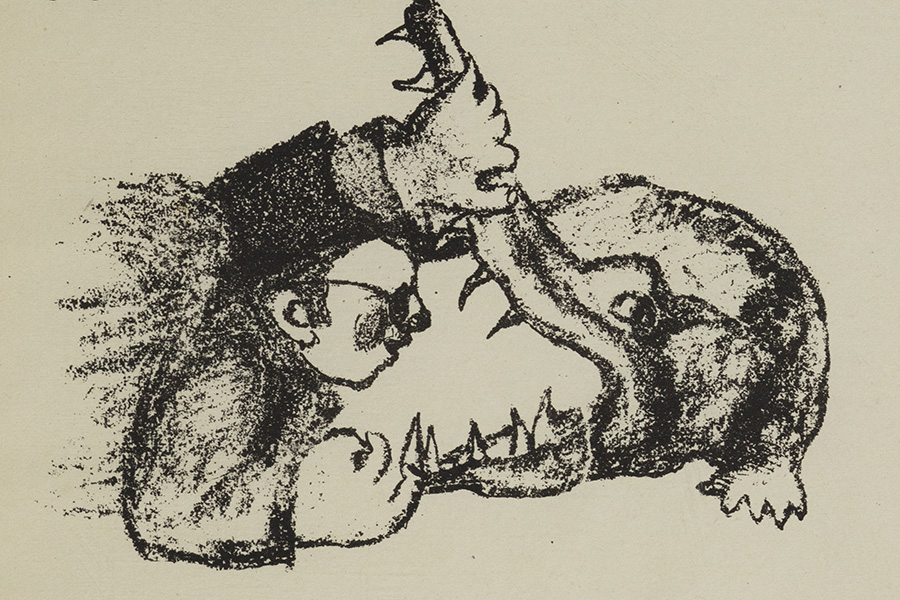
German Studies Chair Kerry Wallach first discovered Rahel Szalit’s art while conducting research in Berlin, Germany, in 2008. Szalit was one of the most influential Jewish women artists in Weimar Berlin during the early 20th century. Her contributions to 20th-century art included illustrations of Jewish and world literature by Heinrich Heine, Sholem Aleichem, Charles Dickens, Leo Tolstoy, and others, as well as paintings, drawings, and cartoons.
Intrigued by the work of this Jewish woman artist, Wallach found a lack of information about Szalit. Her works were largely lost to history after the Holocaust. Motivated to share Szalit’s story, Wallach decided to create a book that would honor Szalit’s contributions to art titled “Traces of a Jewish Artist: The Lost Life and Work of Rahel Szalit” (Penn State University Press, 2024).

Wallach—whose academic focus includes German-Jewish literature, history, and culture; gender and sexuality; visual culture; and antisemitism and the Holocaust—said the book took more than 15 years to complete. She finished her draft manuscript by the summer of 2021 at the end of her sabbatical.
“I started collecting information about Szalit around 2008, and I always kept searching for more details and images while working on other projects,” she explained.
Wallach recalls the many intriguing discoveries and sources she uncovered in her research. One of the most profound artifacts was a personal letter, written in Polish, that Szalit sent from Paris to her friend Eleonore Kalkowska in 1934.

This image is a painting of Szalit’s friend Eleonore Kalkowska by painter Käthe Münzer-Neumann. This painting appeared in a 1929 Berlin exhibition where Szalit also exhibited several paintings: “Die Frau von heute” (The Woman of Today). This photograph is from the exhibition catalog. According to German Studies Chair Kerry Wallach, the painting is presumably lost.
“Another scholar, Anna Dzabagina—who was writing a biography of Kalkowska—found the letter among papers kept by Kalkowska’s grandson. This is an especially rare find because we mostly have professional correspondence by Szalit to various important figures whose letters are kept in archives,” she explained. “Most of Szalit’s family and many of her friends and acquaintances [including Szalit herself] were murdered in the Holocaust, and most letters and other documents have not been preserved.”
Reflecting on her research, Wallach noted that women artists are often omitted from the history of Jewish art, particularly Jewish art created before the Holocaust.
“This book is a feminist recovery project to give voice to a woman artist who was once well known but whose story has never been told at length,” she said.

Several Gettysburg students and alumni contributed to the development of “Traces of a Jewish Artist” by providing research assistance and manuscript proofreading, including Madeline Neiman ’21, Jack Herr ’23, Riley Clipson ’24, Jacob Hunkins ’24, and Alex Meagher ’25. In addition, Karolina Hicke ’14, a visiting assistant professor of German studies at Swarthmore College, provided translation assistance with the Polish-language documents Wallach used in her research.
Always eager to share her scholarly work with her students, Wallach included information from her research on Rahel Szalit in her course The Holocaust Through Film, where students are invited to consider how writers and filmmakers tell untold stories, as well as in several other courses.
Wallach expresses her gratitude to Gettysburg College for providing a research and professional development grant to help with the publication of “Traces of a Jewish Artist” and supporting her scholarly research interests.
“The best part of being on the faculty at Gettysburg College is the freedom to develop courses and conduct research about whatever topics interest me. I feel incredibly fortunate that I can choose what I work on and spend much of my time engaging with meaningful questions related to German-Jewish history and culture,” she said. “My hope is that my students will take away a deeper understanding of cultural diversity and at least a modest commitment to bringing about change in the world.”
By Michael Vyskocil
Visuals provided by Gettysburg College German Studies Chair Kerry Wallach
Posted: 03/05/24